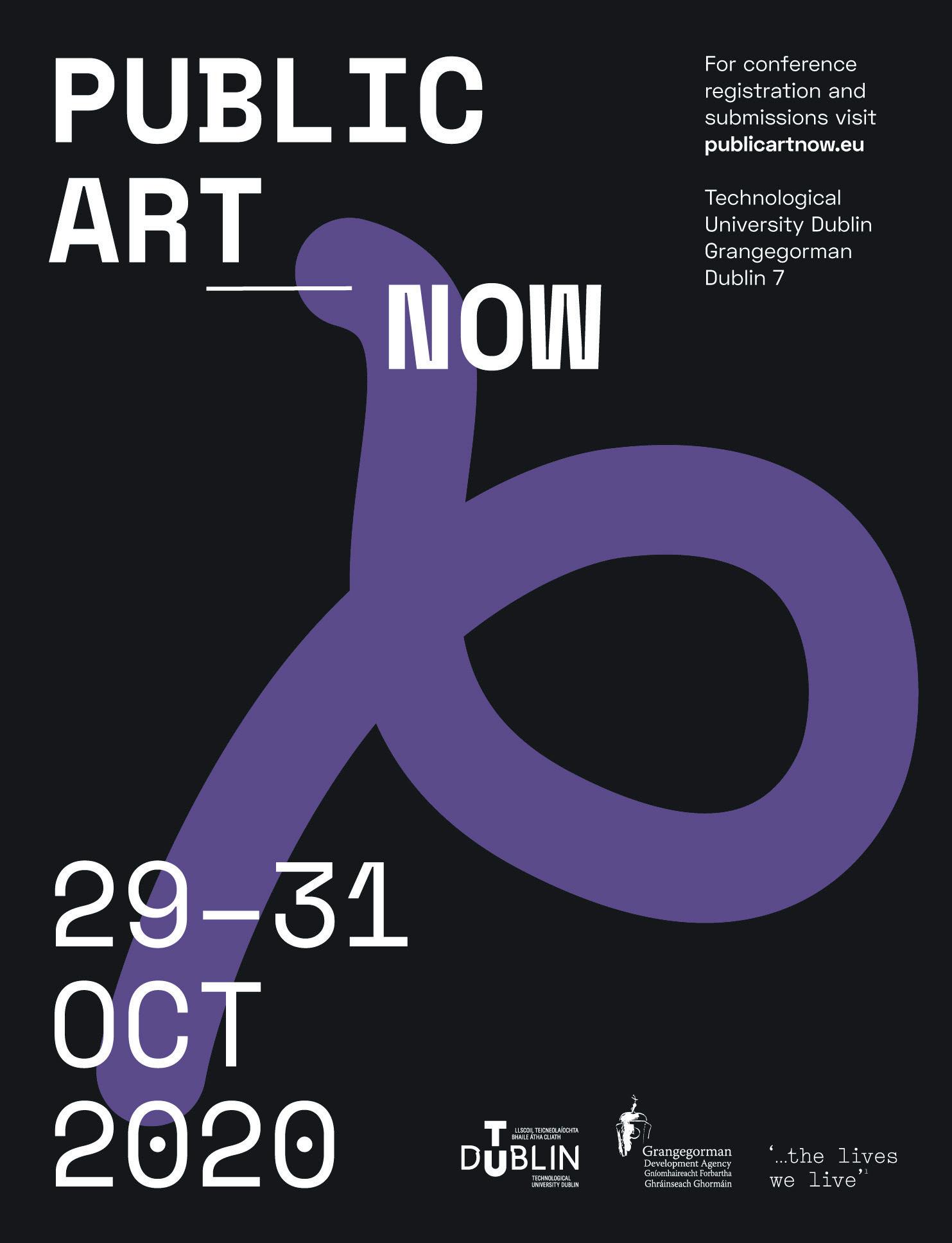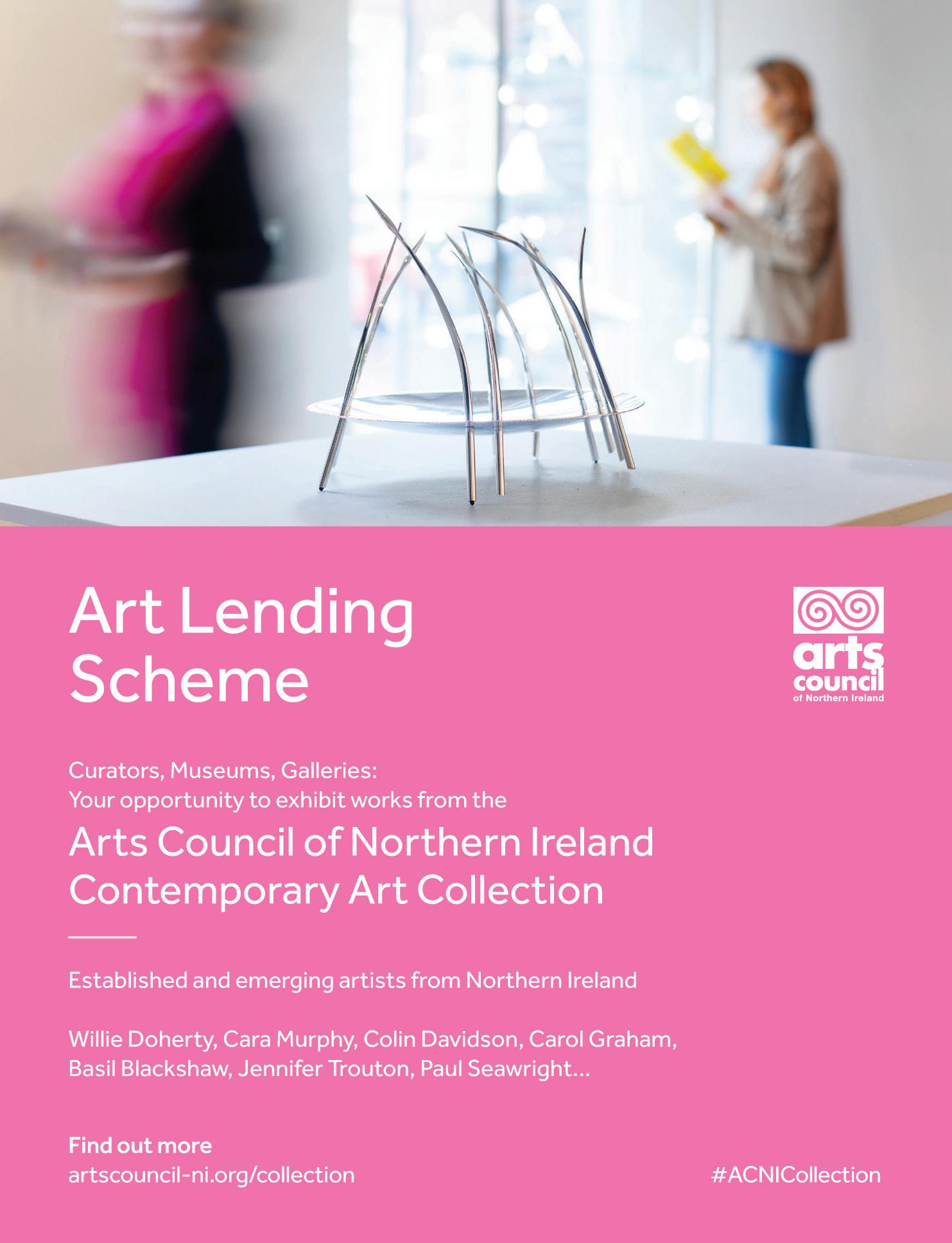
5 minute read
Dynamic Alignment. Helen Carey discusses the evolution of
Dynamic Alignment
THE LOCATION OF Fire Station Artists’ Studios (FSAS) is an important part of the institution itself, contributing much to the character, choices and decisions of this fluid and changing organisation. Along with the many artists who have made FSAS so valuable in terms of Irish artistic legacies, its place, building and today’s context, make the place prized and cherished.
How did it come about? It is now something of a rarity that large buildings in need of changed functions become artists’ studios. FSAS serves as a prime example of what can happen when an enlightened local authority meets creative community energy. FSAS was founded in 1995, when the Fire Station on Buckingham Street was decommissioned, and the fire crews and engines found a home on North Strand. Many worthy contenders wanted to take over the impressive, solid, red-bricked building in a part of Dublin’s strong inner-city residential communities, which survived despite the issues of an inner-city area beside the docks and being held to ransom by drug barons. However, the energies of a visible community of artists from all fields, historians, residents and community activists won the day, creating a base and home for visual artists, for which the council asked a peppercorn rent for a 100-year lease.
Embodying the zeitgeist of its time, the role of the arts in regenerating neglected communities was understood and embraced. Central to the FSAS coming into existence was its connection to the local community and neighbours. A large-scale capital project funded by the Arts Council of Ireland was developed and the former Fire Station became Fire Station Artists’ Studios, with nine live/work studios with leases of up to two years nine months. It is of note that there is no other live/work space on this basis in Ireland and while this makes FSAS a beacon, it is a shame that the success of this adaptation did not breed other iterations throughout Ireland, as large buildings in public ownership became available over the last quarter of a century. Well-designed studio apartments, where artists could live and work in security and support, were reinforced by connections to communities who undertook activities within the buildings, with FÁS courses and placements taking place alongside FSAS participation in local commissions. Adding the sculpture workshop, the transformation of the old fire engine rooms into smaller workspaces and the digital media resource areas gave the feel of a ‘hub’ long before it was a thing… What emerged through this time was the commitment to socially engaged art as a field of artistic work, that FSAS could nurture in a leader’s role. This was a direct result of its origins, allowing ambitious projects for artists and communities to be imagined and delivered.
Continuing into the boom of the early 21st century, FSAS rang the changes through its relationships to local communities, as well as responding to the needs and resources for artists. FSAS responded to a growing confidence in the area by giving support to independent projects and by managing large-scale commissions close by, as well as into Dublin Port area and other neighbourhoods. Internationally renowned artists (both Irish and of other nationalities), who passed through the doors of FSAS, meant that in the visual arts field, Dublin 1 stood for excellence and best practice. This reputation is in stark contrast to a more general view of the area: as recession and criminality bit deeply, Dublin 1 became a troublesome part of the city, as its pristine financial services neighbour prospered, due to neglect and broken promises. Most of Ireland’s visual artists know and love Dublin 1, seeing the area affectionately as nourishing their creative lives, by comparison with the national approach to the same area.
In 2014 FSAS added the house at 12 Buckingham Street to its footprint through the support of Clancourt plc, Croke Park Community Fund and Dublin City Council’s agreement to extend the peppercorn rent and lease conditions. This meant adding two apartments and a project space. With upgrading of services within the buildings, FSAS now provides 11 live/work accommodation for 2 years 9 months and has a curator apartment for selected international visitors, extending Dublin 1’s reputation among artists. Furthermore, through ongoing experimentation, FSAS has developed provision of leading technology to artists at affordable prices, which attracts Irish and international artists, offering a unique combination of resources.
Logically following on from this, FSAS continues to make the case, with many artists and other studio groups, for repeating and reinventing this resource provision across Ireland in derelict buildings or new developments as a soldering instrument for communities as well as a platform for the development of the nation’s contemporary artistic life. Dublin has lost over 70% of its studio spaces at this time, and while Dublin cherishes its consolidated studio providers, valiant and consistent attempts to stem this crisis has met with unenlightened and rather cowardly indecision and delay. Meanwhile Irish artists leave the city and country in droves. Never has the enlightenment of the recent past, which delivered FSAS, contrasted so easily with the indecision of current decision makers.
In terms of community, the FSAS relationship to the local community changed. The remaining community presence of North Centre City Community Action Project (NCCCAP) within the FSAS building finished, when NCCCAP amalgamated with sister project Lourdes Youth Community Services (LYCS) in 2019. This allowed extra day studio spaces to be added to the FSAS provision. Although the FSAS/local community shifted shape through the decades, the challenge of a physical separation is different. Looking at FSAS strengths and the challenging, persistent and profound needs of the local community, FSAS needed to re-imagine how the studios could play their part, moving from a notion of community of place to a dynamic alignment with social justice. The creative skills building platform for young people has at its core developing and reinforcing the strengths of the participating young people combined with the FSAS facilities and expertise, specifically in digital media. This format shows a potential for engaging 21st century artists with the community in terms of economic power, namely real skills and work.
In FSAS, the mission of responding to artists’ needs, playing a part in the community and thinking into the future represents investment in public culture. It is a vibrant and ever-changing life in the old fire station. If only there could be more like this – it is as needed now as it was in 1995.
Helen Carey is Director of Fire Station Artists’ Studios. firestation.ie















